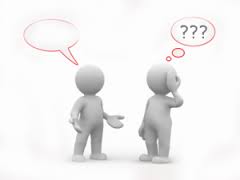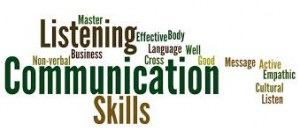The Objectives of Communication
• The single most imperative perception is that the goal of correspondence is not the transmission however the gathering.
• The entire planning, presentation and substance of a discourse should in this way be equipped not to the speaker however to the gathering of people.
• The presentation of an immaculate undertaking arrangement is a disappointment if the group of onlookers does not comprehend or are not convinced of its merits.
• A clients’ visit is an exercise in futility in the event that they leave without understanding the full worth of your item.
• The goal of correspondence is to make your message comprehended and recollected.
• The primary issue with this goal is, obviously, the individuals to whom you are talking.
• The normal person has a short consideration compass and a million different things to consider.
• Your work in the presentation is to reach through this mental mist and to hold the consideration sufficiently long to make your point.
The Plan
• It is hard to overestimate the significance of cautious arrangement.
• Five minutes on the floor before senior administration could choose the acknowledgement of a proposition of a while length of time for the administrator and the entire group.
• With such a great amount of possibly in question, the moderator must think upon the certainties being displayed as well as upon the style, pace, tone and at last strategies which ought to be utilized.
• As a dependable guideline for a normal presentation, no under 1 hour ought to be spent in arrangement for 5 minutes of talking.
Form your Objectives
• The beginning stage in arranging any discourse is to detail an exact goal.
• This ought to take the type of a basic, compact explanation of purpose.
• No two goals will be served similarly well by the same presentation; and in the event that you are not certain at the onset what you are attempting to do, it is far-fetched that your arrangement will attain to it.
• Not numerous goals can be accomplished in 30 minutes.
• It is significantly more gainful to attain to one objective than to bungle more than a few.
• The best approach is to confine the vital goal and to rundown at most two others which can be tended to giving they don’t occupy from the primary one.
Distinguish the Audience
• This is carried out by distinguishing their points and destinations while going to your presentation.
• If you are looking for support for another item arrange from senior administration it is valuable to know and comprehend their primary destinations.
• If they are at present stressed that their item range is outdated and dated, you would stress the inventive parts of your new item.
• This essential of coordinating the group of onlookers points, nonetheless, goes past the straightforward charisma of a thought – it is the least complex and best way of acquiring their consideration toward the starting.
• If your introductory statements suggest that you comprehend their issue and that you have an answer, then they will be complimented at your consideration and mindful to your each expression.
Structure
• All discourses ought to have an unmistakable structure or arrangement; a discussion without a structure is a wooly chaos.
• If you don’t arrange your musings into an organized way, the gathering of people won’t have the capacity to tail them.
• Having secured the point of your presentation you ought to pick the most fitting structure to attain to it.
• However, the structure should not hinder the principle message.
• If it is excessively unpredictable, excessively convoluted or essentially excessively perceptible the crowd will be occupied.
• If a segment is superfluous to the accomplishment of your key targets, pluck it out.
Interpersonal Communication
• Interpersonal correspondence lies at the intersection of our social comprehension and development and hence, each of these segments impacts each other in more ways we can envision.
• There are social manners that direct the suitable outflow for the dialect.
• Communication style differs starting with one ethnicity then onto the next because of the way of the development of the dialect.
• Theorists have recognized advanced, verbal correspondence, and analogical, nonverbal correspondence, segments inside dialects.
• English would be an illustration of a dialect that weighs more for the computerized manifestation of correspondence.
• In “Fundamental Concepts of intercultural correspondence”, Bennett parallels this phenomena in English to PCs by depicting the words symbolization of “classifications of phenomena in the same self-assertive route that on/off codes symbolize numbers and operations in a PC”.
• Interpersonal correspondence is the procedure by which individuals trade data, sentiments, and importance through verbal and non-verbal messages: it is eye to eye correspondence.
• Interpersonal correspondence is not just about what is really said – the dialect utilized – however how it is said and the non-verbal messages sent through manner of speaking, outward appearances, signals and non-verbal communication.
• When two or more individuals are in the same place and are mindful of one another’s vicinity, then correspondence is occurring, regardless of how unobtrusive or inadvertent.
• Without discourse, an onlooker may be utilizing prompts of carriage, outward appearance, and dress to structure an impression of the other’s part, enthusiastic state, identity and/or aims.
• Although no correspondence may be expected, individuals get messages through such manifestations of non-verbal conduct.
Non-Verbal Communication:
• Interpersonal correspondence not just includes the unequivocal significance of words, that is the data or message passed on, additionally alludes to certain messages, whether deliberate or not, which may be communicated through non-verbal practices.
• Non-verbal interchanges incorporate outward appearances, the tone and pitch of the voice, motions showed through non-verbal communication (kinesics) and the physical separation between communicators (proxemics).
• Non-verbal signs can give hints and extra data and significance well beyond talked (verbal) correspondence.
• Interpersonal correspondence is further confused in that it is typically unrealistic to translate a signal or representation precisely all alone.
• Non-verbal correspondence comprises of a complete bundle of outflows, hand and eye developments, postures, and motions which ought to be translated alongside discourse (verbal correspondence).
Non-verbal messages permit people to:
o Reinforce or alter what is said in words.
o Convey data about their passionate state.
o Define or strengthen the relationship between individuals.
o Provide input to the next individual.
o Regulate the stream of correspondence
The sorts of interpersonal correspondence that are not communicated verbally are called non-verbal correspondences. These include:
• Body Movements (Kinesics)
• Posture
• Eye Contact
• Paralanguage
• Closeness or Personal Space
• Facial Expressions
• Physiological Changes
Verbal Communication:
• Clarity of discourse, trying to avoid panicking and centered, being affable and behavior will all support the methodology of verbal correspondence.
• Verbal correspondence is the demonstration of communicating your contemplations with words.
• Verbal correspondence is for the most part characterized as talked dialect.
• Tone, articulation, stops, commotion, accentuation, word decision, these can all be utilized while identifying with upgrade the talked word.
• Examples of this sort of verbal correspondence: talks, vis-à-vis discourses, phone discussions, voice message, TV, radio, recorded books and workshops, features.
• Speakers utilizing gesture based communication would be thought to be utilizing a type of verbal correspondence.
• In certain zones, particularly law, there would be a significant distinction in the middle of talked and composed correspondence.
• The premise of correspondence is the connection between individuals.
• Verbal correspondence is one path for individuals to convey vis-à-vis.
• Some of the key parts of verbal correspondence are sound, words, talking, and dialect.
• The real source of dialect is liable to impressive hypothesis.
• Some scholars trust it is an outgrowth of gathering exercises, for example, cooperating or moving.
• Others accept that dialect created from essential sounds and motions.
• Over 3,000 dialects and significant vernaculars are talked on the planet today.
• The advancement of dialects reflects class, sex, calling, age bunch, and other social components.
• The tremendous assortment of dialects as a rule makes troubles between distinctive dialects, yet even inside a solitary dialect there can be numerous issues in comprehension.
• Many issues can emerge in talking and the best way to tackle these issues is through experience.
• Speaking can be taken a gander at in two noteworthy territories: interpersonal and open talking.
• In interpersonal talking, decorum is imperative.
• To be a compelling communicator one must talk in a way that is not culpable to the beneficiary.
• In business today, progressive correspondence is of most extreme significance to all individuals included.
• The other real territory of talking is open talking.
• From the source of time, it has been clear that some individuals are simply preferable





11 Comments. Leave new
Well explained. Well done!
Good work.. but u need to improve your presentation…!
Topic and content is good, but you need to improve the presentation..
Very well explained!
The point wise presentation makes it easy to read.. Well done!
very precise.
Effective Communication is significant for managers in the organizations so as to perform the basic functions of management, i.e., Planning, Organizing, Leading and Controlling.
Communication gap can cause some serious issue at workplace.
good one…
Well presented
nice article